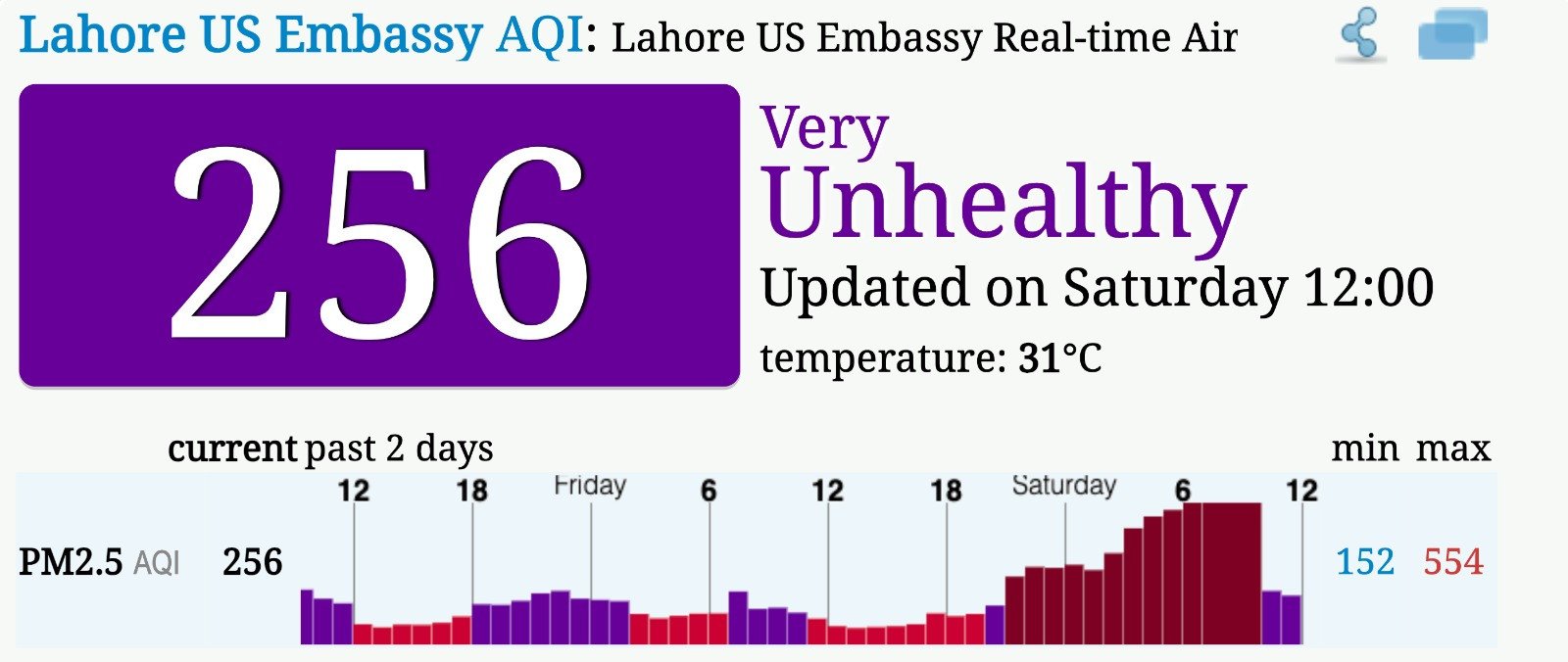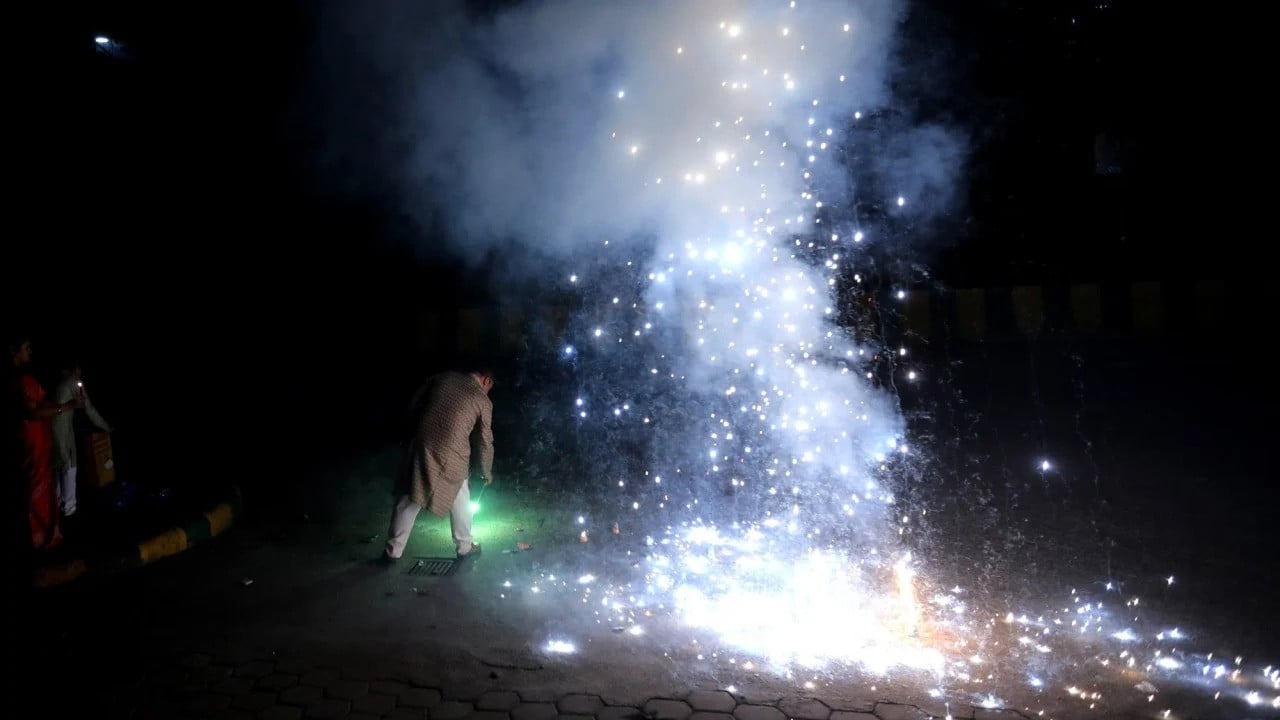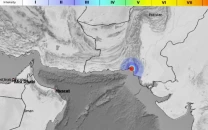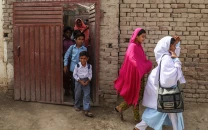Indian Diwali celebrations worsen Lahore's smog situation
Lahore's air quality hits more than 250 , causing health concerns amid winds from India post Diwali celebrations.
1730531553-0/Express-Tribune--(1)1730531553-0-640x480.webp)
Strong winds from India have pushed Lahore's PM2.5 air quality index spiked to more than 250, causing illnesses among residents.
The World Air Quality Index Project reported a very unhealthy reading of fine particulate matter (PM2.5) in Lahore, which are tiny particles that can be easily inhaled and affect health.

Photo: Lahore US Embassy AQI
The readings by The World Air Quality Index Project showed a spike in the PM2.5 matter for Saturday shortly after Friday's Diwali celebrations in neighbouring New Delhi which saw the extensive use of fireworks in the Indian capital despite a government ban.
The health warnings indicated emergency conditions for Lahore that could impact the entire population.
Active children, adults, and individuals with respiratory diseases like asthma are advised refrain from any outdoor activities in these conditions. Others, particularly children, should minimise their outdoor exertion.
Meanwhile local meteorologists have warned citizens that the intensity of the smog will persist for the next 48 hours, according to Express news.
NASA has released a map of the high winds, indicating that severe smoke from the burning of crop residues in India has entered Pakistan.
The US space agency also shared air imagery showing that large-scale burning of crop residues in Indian regions has intensified the smog.
Due to changing wind patterns, Lahore's average air pollution index was 157 yesterday, compared to an average of 180 over the past five days.
The swift winds from India have carried smoke into Pakistani areas, with climate experts stating that the extensive burning of crop residues in India has rapidly increased smog levels.
In areas under a green smart lockdown, dozens were arrested for violating government orders, with over 600,000 fines imposed in just 24 hours. The e-challan system, supported by artificial intelligence, is also ongoing, as reported by Express News.
Meanwhile, India's capital New Delhi was wreathed in poisonous smog Friday, with air pollution worsening after a fireworks ban was widely flouted for raucous celebrations for the Hindu festival of lights, Diwali.

New Delhi's traffic-clogged streets are home to more than 30 million people, and the city is regularly ranked as one of the most polluted urban areas on the planet.
The city is blanketed in cancer-causing acrid smog each year, primarily blamed on stubble burning by farmers in neighbouring regions to clear their fields for ploughing, as well as factories and traffic fumes.
But air worsened Friday after a thunderous night of firecrackers lit as part of Diwali celebrations, despite city authorities last month banning their sale and use.
City police had seized nearly two tonnes of fireworks before Diwali, but the crackers remained readily available for sale in neighbouring states.
Many residents celebrated at home, holding a family meal and lighting small candles in praise of the Hindu goddess Lakshmi and symbolising the victory of light over darkness.
Others launched firework rockets and booming crackers, rocking the densely packed city throughout the night.
Police are often reluctant to act against violators, given the strong religious sentiments attached to the crackers by Hindu devotees.
Critics say arguments between rival politicians heading neighbouring states -- as well as between central and state-level authorities -- have compounded the problem.
India's Supreme Court last month ruled that clean air was a fundamental human right, ordering both the central government and state-level authorities to take action.
"Delhi's toxic air is killing us softly with its smog," the Times of India wrote in an editorial last week, as the winter pollution returned.
"It is nothing new, but what doesn't cease to amaze, year after year, is the state's stilted response."
Levels of fine particulate matter -- dangerous microparticles known as PM2.5 pollutants that enter the bloodstream through the lungs -- surged to more than 23 times the World Health Organization recommended daily maximum.
Soon after dawn, pollutant levels topped 345 micrograms per cubic metre, according to monitoring firm IQAir, which listed air in the sprawling megacity as "hazardous".
It rated New Delhi as worst in the world, just above smoke-choked Lahore in neighbouring Pakistan.



















COMMENTS
Comments are moderated and generally will be posted if they are on-topic and not abusive.
For more information, please see our Comments FAQ